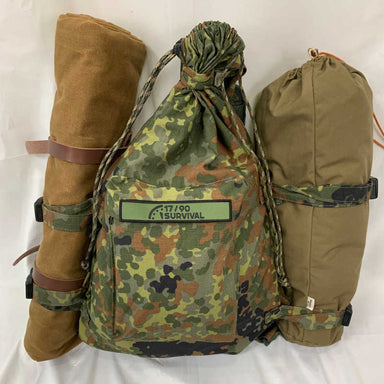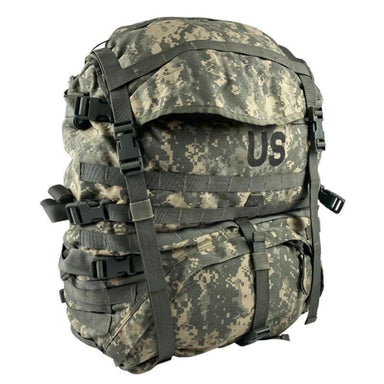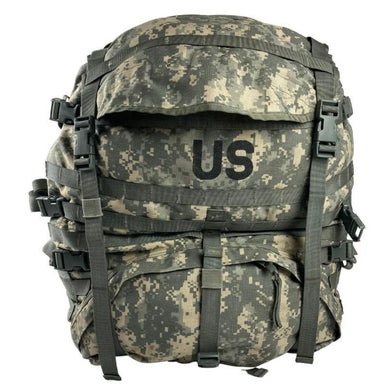

17/90 Survival | Veshmeshok | V1
Enjoy your Soviet Veshmeshok but realize they are becoming more of a collectible as opposed to a piece of used equipment? Have you ordered a Vesh...
View full detailsMilitary surplus backpacks are popular among outdoor enthusiasts, survivalists, and those seeking durable, functional packs for various activities. These backpacks are typically ruggedly built and designed to withstand harsh conditions, making them suitable for camping, hiking, backpacking, and tactical use.
Durability and Construction:
Capacity and Size:
Comfort and Support:
Organization:
Weather Resistance:
Tactical Features:
Intended Use: Determine if you need the backpack for hiking, camping, tactical purposes, or general outdoor activities.
Size and Capacity: Consider the volume needed to carry your gear comfortably. Larger capacities are suitable for extended trips, while smaller packs are ideal for day hikes or EDC (Everyday Carry).
Condition: Military surplus items can vary in condition from brand new to used. Assess the condition and any wear or repairs needed.
Comfort and Fit: Ensure the backpack’s straps, harness, and waist belt fit comfortably and securely to your body.
Features: Evaluate additional features such as MOLLE webbing, hydration compatibility, and organizational options based on your preferences and needs.
Pack Carefully: Distribute weight evenly and utilize the backpack’s compartments for efficient organization.
Maintenance: Clean and inspect the pack regularly to maintain its condition and functionality.
Customization: Utilize MOLLE webbing to attach additional pouches or accessories based on your specific needs.
Weather Protection: Consider using waterproofing treatments or rain covers to protect your gear in wet conditions.
Military surplus backpacks offer robust construction, ample storage options, and durability ideal for outdoor adventures and tactical use. By selecting a pack that matches your needs and maintaining it properly, you can enjoy reliable performance in various environments and activities.

 Save Liquid error (snippets/product-badge line 32): Computation results in '-Infinity'%
Save Liquid error (snippets/product-badge line 32): Computation results in '-Infinity'%
Enjoy your Soviet Veshmeshok but realize they are becoming more of a collectible as opposed to a piece of used equipment? Have you ordered a Vesh...
View full details
 Save Liquid error (snippets/product-badge line 32): Computation results in '-Infinity'%
Save Liquid error (snippets/product-badge line 32): Computation results in '-Infinity'%
Ample Storage Capacity: The MOLLE II Large Ruck Sack offers generous storage space, allowing you to carry all the gear and supplies you need for e...
View full details
